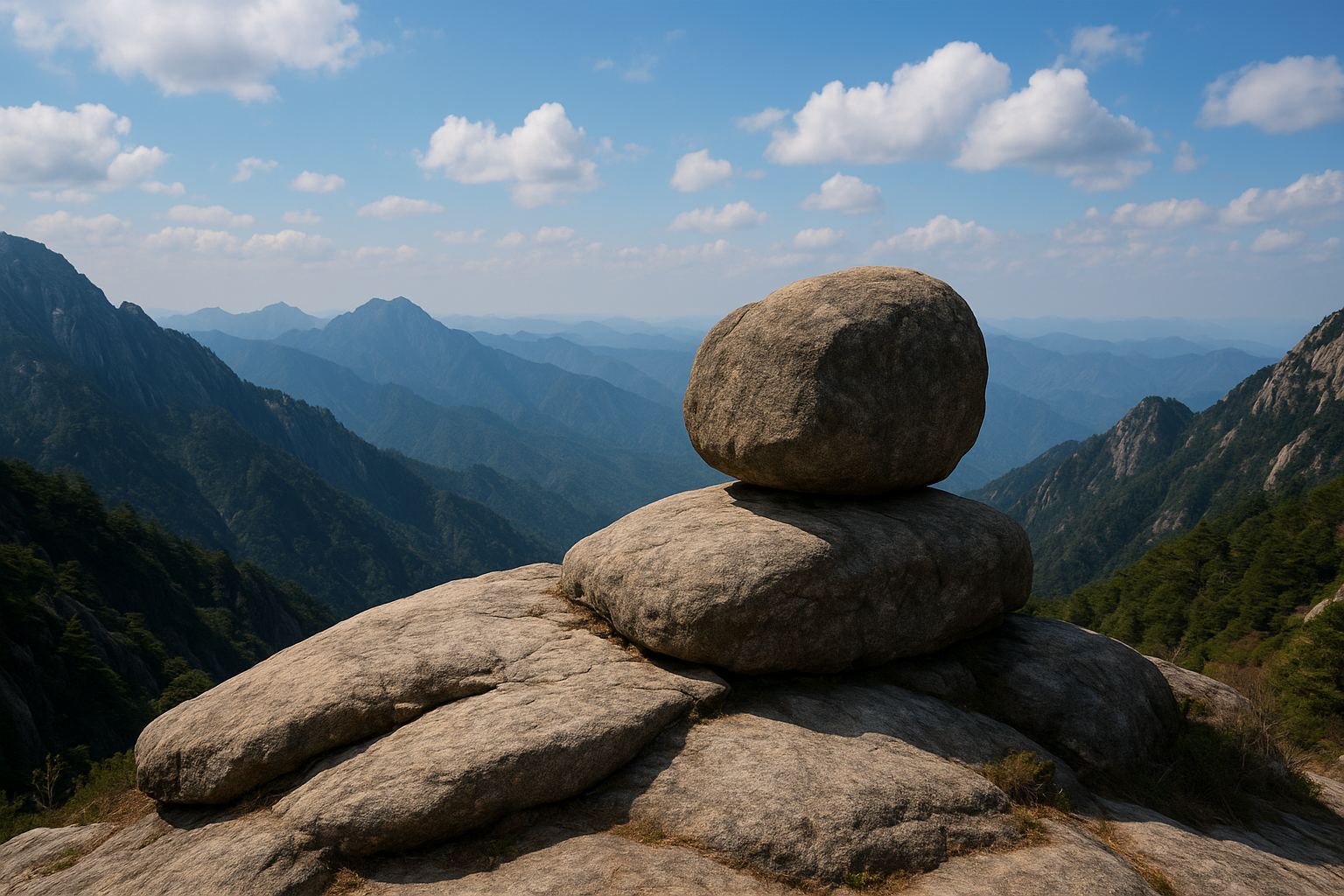Stone and Sky: Daoist Meditations in the Mountains
The Daoist tradition, rich with an understanding of nature and existence, often returns to the mountains as a source of inspiration and insight. The interplay between stone and sky becomes a metaphor for the duality and unity intrinsic to Daoist philosophy. Amidst these ancient heights, practitioners find a perfect environment for meditation, introspection, and spiritual growth.
The Mountains as Spiritual Sanctuaries
For centuries, mountains have been considered sacred spaces in Daoism. They represent an interface between heaven and earth—a place to experience the balance of yin and yang. The Daoist sage Zhuangzi once mused, “He who goes to the trouble to travel to a mountain or forest, or explore water-ringed caves, to observe wonders, to contemplate the Many and the One, achieves spontaneous harmony with the essence of their surroundings.”
This harmony is central to Daoist meditation, where the aim is to reconnect with the universal Dao, or “The Way”. As practitioners position themselves amidst the rugged serenity of mountains, they immerse in the silence and stillness, prompting a deep inner transformation.
The Duality of Stone and Sky
The concept of duality is persistent within Daoist thought, yet it is understood as an opportunity for balance rather than opposition. The firmness of stone represents the material and terrestrial, while the vast openness of the sky symbolizes the spiritual and ethereal. As noted by the philosopher Laozi, “To the mind that is still, the whole universe surrenders.”
This surrender symbolizes the blending of oppositions, a journey from the material pursuit to spiritual clarity. The sound of wind sweeping through crevices and the sight of clouds resting on summits serve as reminders of the transient but interconnected nature of reality.
Daoist Meditation Practices
In these tranquil enclaves, practitioners engage in various forms of meditation and Qi Gong. These practices center around breathing, posture, and internal awareness—bridging the gap between mind and nature.
- Seated Meditation: Known as Zuòwàng, or “sitting and forgetting”, this practice focuses on letting go of the illusion of separation and embracing the flow of life.
- Walking Meditation: Daoist monks often practice slow, mindful walking, using the contours of the landscape as a guide for their inner journey.
- Qi Gong: These dynamic exercises harness the energy of the surroundings to cultivate inner strength and harmony.
Each practice encourages a fusion with nature, promoting a deeper understanding of the Daoist principles of simplicity, patience, and compassion. The elemental beauty of mountains provides both a literal and metaphorical backdrop to these ancient rituals, encouraging practitioners to shed mental clutter and embrace the essence of being.
Modern Applications of Daoist Mountain Meditation
Today, the teachings of mountain meditation have transcended their historical roots, influencing modern mindfulness and wellness practices. Experts note that nature therapy capitalizes on the inherent tranquility found in natural surroundings to cultivate a sense of peace and purpose, a cornerstone of Daoist philosophy.
The benefits of such practices extend beyond tranquility; they foster resilience, enhance creativity, and promote emotional and physical health. In a world frequently marred by stress and distraction, returning to natural sanctuaries—be they literal or metaphorical—provides a much-needed refuge.
“Nature does not hurry, yet everything is accomplished.” – Laozi
This quote embodies the spirit of Daoist mountain meditation. Amidst stone and sky, practitioners learn that patience and presence hold the key to true understanding.
Conclusion
In the towering silence of the mountains, Daoist philosophy finds its fullest expression. Here, the interplay of stone and sky offers profound insights into the balance of life, urging one to sit, breathe, and simply be. As the ancient wisdom of Daoism continues to influence modern practices, its meditative techniques rooted in nature remind us of the importance of harmony, patience, and simplicity—principles that are as crucial today as they were millennia ago.
